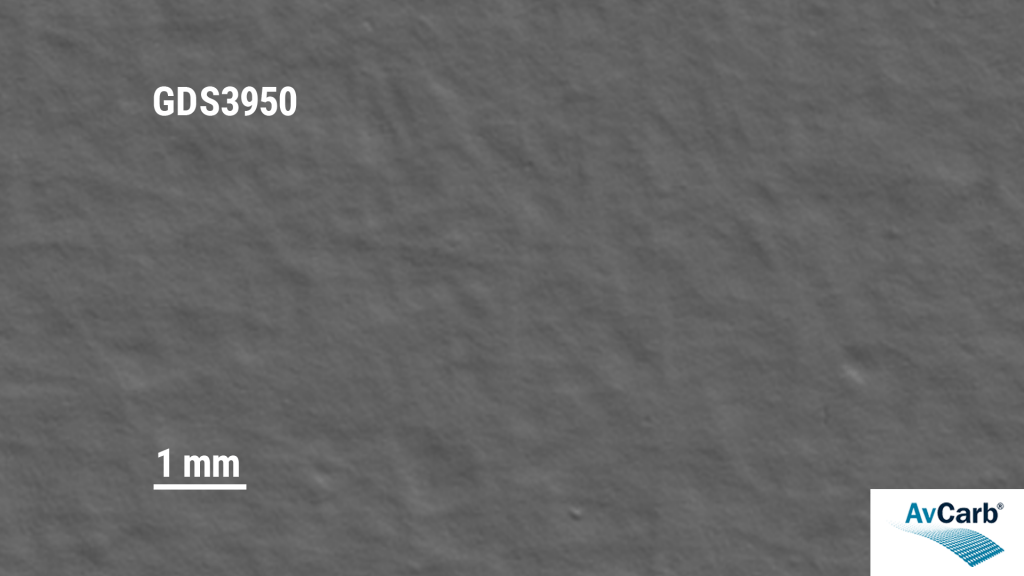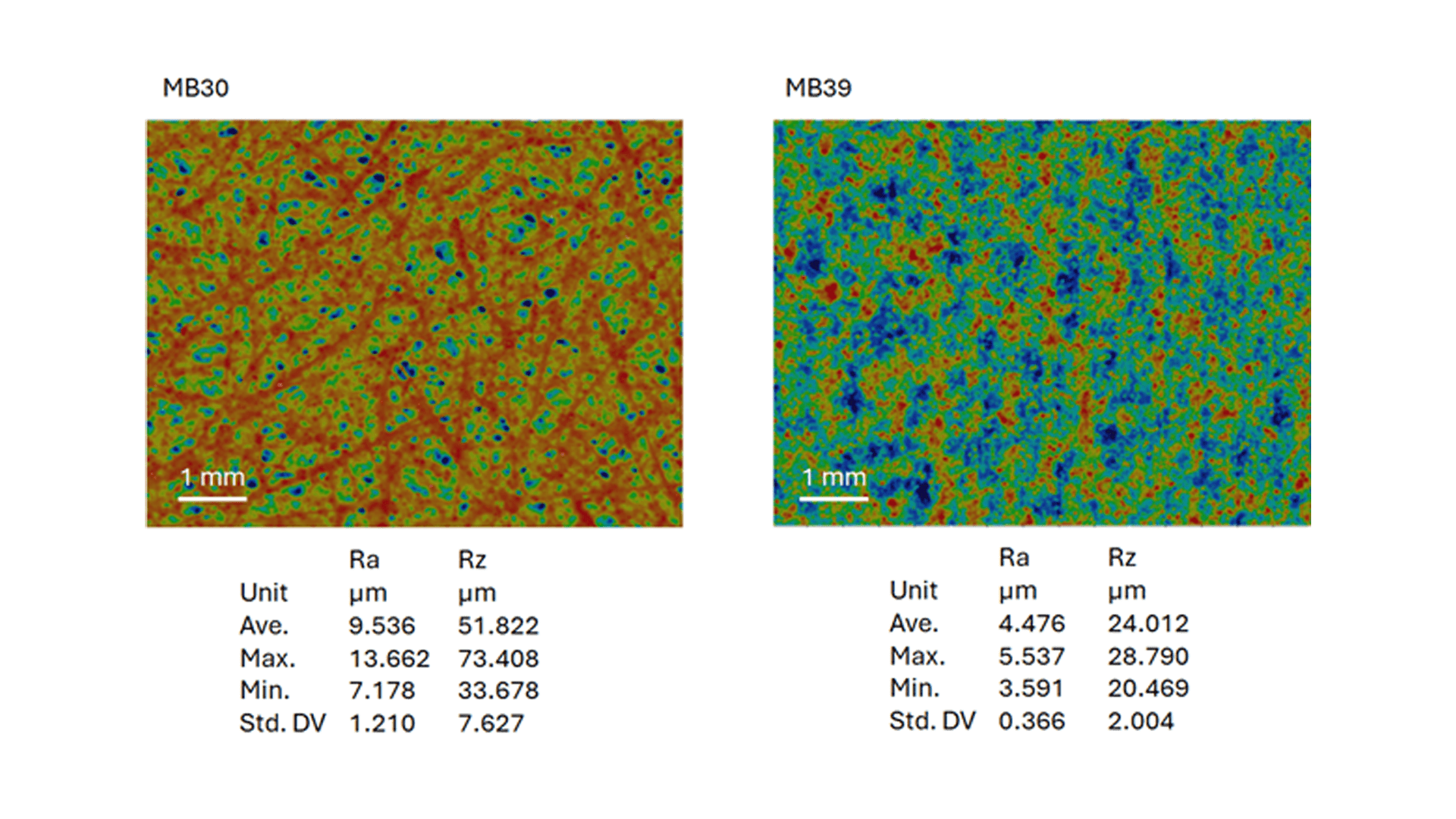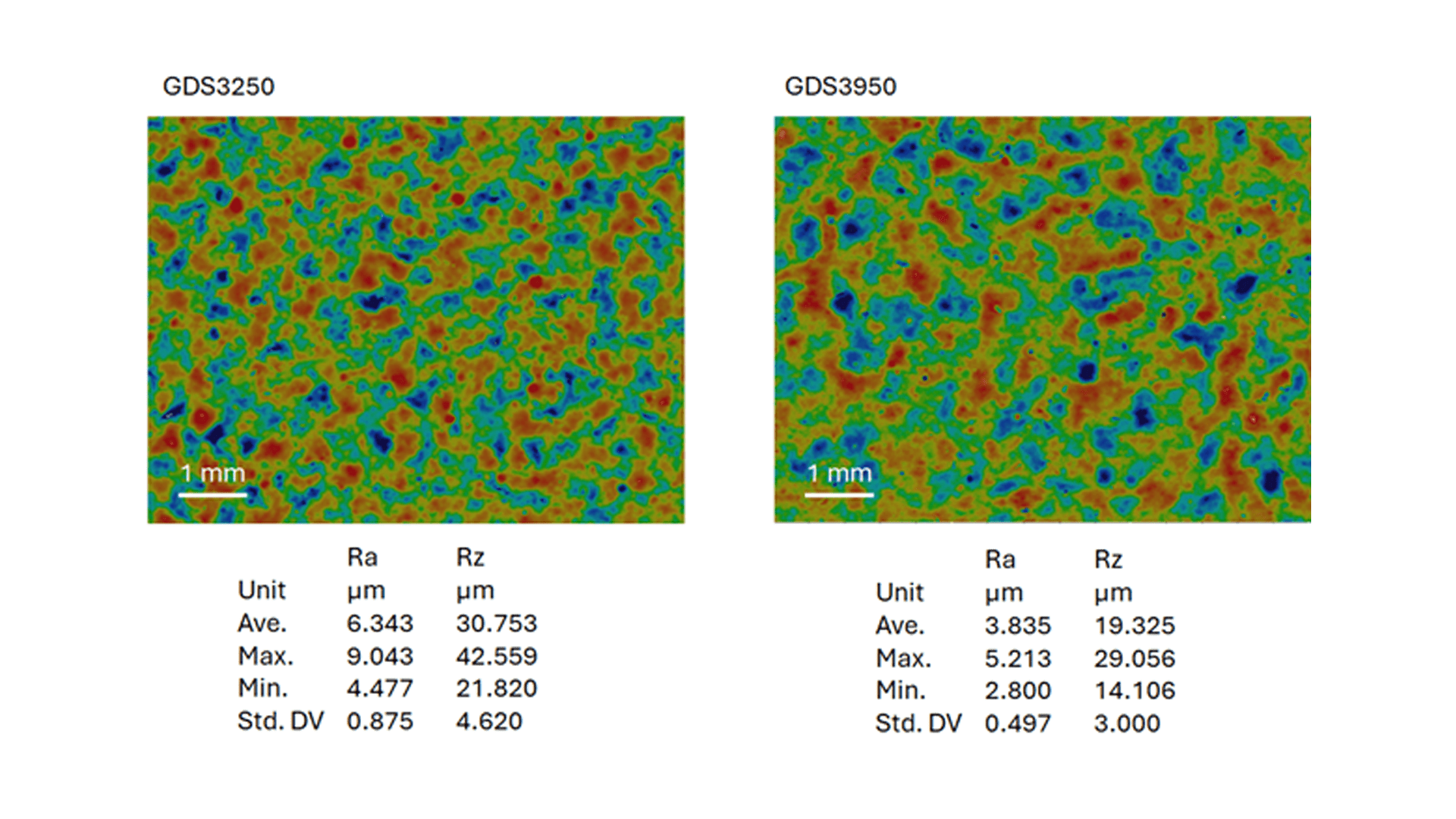
AvCarb is excited and proud to formally announce the new series 9 microporous layer (MPL) for our Gas Diffusion Layer (GDL) technology. This new series incorporates an improved MPL formulation that minimizes penetration into the carbon fiber substrate during production, thereby reducing the overall surface roughness. This improvement results in reduced contact resistance yielding lower high frequency resistance (HFR) within the fuel cell system, provides a uniform surface for subsequent coatings, and offers better protection for the membrane. This breakthrough not only bolsters the efficiency and performance of polymer electrolyte membrane fuel cells (PEMFCs), but also ensures compatibility with thinner membranes (<10 µm) that enable fuel cells to achieve maximum power densities.
This improvement can be applied to any standard AvCarb Gas Diffusion System (GDS) and is clearly denoted by the number 9 in the GDS code (e.g., MB-39, GDS3950, etc.). AvCarb continues to prioritize its industry leading research and development capability for all our materials, enabling clean energy power solutions and is committed to achieving excellence in the field. Please contact us at [email protected] for more information.
- Half of the Surface Roughness
- Less Penetration into the Paper
- Uniform fiber coverage

